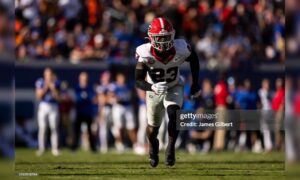Pittsburgh Steelers running back Isaac Redman was asked in a recent Q & A session with fans on steelers.com if he thinks the offense will use the backs more in the passing game in 2013 and here is what he had to say.
“I can’t say what we should do as far as the offense, but we have implemented the running backs into the passing game a lot more under Coach (Todd) Haley,” said Redman.
Redman is indeed right as last year the running backs and fullbacks were targeted on 19.5% of all pass attempts, and that was the highest percentage for a Steelers offense dating back to 2003 when Tommy Maddox was the quarterback.
The Steelers running backs and fullbacks also combined to tally 640 receiving yards in 2012, which was 16% of all receiving yardage gained. I researched all the way back to 2002, and that was the highest percentage during that span.
So just how much will the Steelers use the backs in the passing game in 2013? We don\’t know for sure, but one of the reasons that running back Le\’Veon Bell was selected in the second round of the 2013 NFL Draft was because of his ability to catch the ball out of the backfield. In his three seasons at Michigan State Bell registered 78 catches for 531 yards with 67 of those catches coming in the last two seasons.
In addition to Bell and the other running backs currently on the Steelers roster, fullback Will Johnson showed in his first season with the team that he too is a receiving threat as he totaled 15 catches for 137 yards and a touchdown in 2012. Because of that, I suspect he will get a few more balls thrown his way in 2013.
Knowing what we know right now, I would say that it is safe to say that the Steelers backs will be targeted on average at least 6.5 times a game in 2013, which would match 2012. That number could of course go higher depending on how long it takes for Bell to win the starting job.
| YEAR | RB REC | RB ATT | RB REC YDS | ALL REC | ALL ATT | ALL REC YDS | % RB REC | % RB ATT | % RB REC YDS |
|---|---|---|---|---|---|---|---|---|---|
| 2012 | 79 | 112 | 640 | 354 | 574 | 4012 | 22.3% | 19.5% | 16.0% |
| 2011 | 60 | 78 | 433 | 341 | 539 | 4333 | 17.6% | 14.5% | 10.0% |
| 2010 | 62 | 81 | 490 | 298 | 479 | 3890 | 20.8% | 16.9% | 12.6% |
| 2009 | 55 | 75 | 492 | 351 | 536 | 4496 | 15.7% | 14.0% | 10.9% |
| 2008 | 54 | 78 | 399 | 303 | 506 | 3607 | 17.8% | 15.4% | 11.1% |
| 2007 | 55 | 77 | 424 | 282 | 442 | 3418 | 19.5% | 17.4% | 12.4% |
| 2006 | 73 | 99 | 587 | 312 | 523 | 4026 | 23.4% | 18.9% | 14.6% |
| 2005 | 46 | 63 | 448 | 228 | 379 | 3104 | 20.2% | 16.6% | 14.4% |
| 2004 | 43 | 64 | 334 | 228 | 358 | 2970 | 18.9% | 17.9% | 11.2% |
| 2003 | 69 | 107 | 560 | 306 | 532 | 3548 | 22.5% | 20.1% | 15.8% |
| 2002 | 71 | 97 | 542 | 350 | 551 | 4036 | 20.3% | 17.6% | 13.4% |







